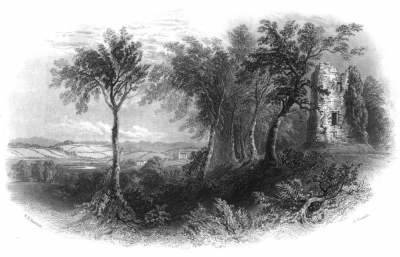History of the Stewarts | Battles and Historic Events
If you are a Stewart Society Member please login above to view all of the items in this section. If you want general information on how to research your ancestors and some helpful links - please look in background information.
If you have a specific question you can contact our archivist.

Mary´s abdication had not been universally popular, even among sections of the Protestant nobility, and news of her escape was widely welcomed. With an escort of fifty horse led by Lord Claud Hamilton she arrived in Lanarkshire, soon to be joined by a wide cross-section of the nobility, including the Earls of Argyll, Cassillis, Rothes and Eglinton, the Lords Sommerville, Yester, Livingston, Herries, Fleming, Ross, many of the feudal barons and their followers.
It was declared openly that her abdication, and her consent to the coronation of James, had been extorted from her under threat of death. An act of council was then passed, declaring the whole process by which Moray had been appointed as Regent to be treasonable. A bond was drawn up by those present for her restitution, signed by eight earls, nine bishops, eighteen lords, twelve abbots and nearly one hundred barons.
On the 13th of May Moray; however, was camped at Glasgow and, guessing her intentions, marched out with a smaller, but more disciplined, army and intercepted her forces at what was then the little village of Langside, now Queen´s Park, Glasgow.
It was Mary´s intention to avoid battle if possible, retiring instead to Dumbarton Castle, still held for her by John Fleming, 5th Lord Fleming. Here she would be in a virtually impregnable position, well placed to receive the expected reinforcements from the north, and then recover her hold over the country by degrees. With the intention of by-passing Moray she marched to Rutherglen castle meeting loyal supporters and then on a wide circuit past Glasgow, intending to move by way of Langside, Crookston and Paisley back towards the River Clyde, and then on to Dumbarton on the north side of the Clyde estuary. Moray drew up his army on the moor close to the village of Langside, then several miles south of Glasgow but now well within the city. Kirkcaldy, keeping an eye on the enemy movements, noted that they were keeping to the south of the Clyde, the Regent´s army being on the opposite bank. In response he ordered hackbutters (musketeers) to mount behind each of his horsemen, rapidly fording the river, and placing them among the cottages, hedges and gardens of the village, which bordered each side of a narrow lane, through which Mary´s army must defile. Meanwhile Moray continued to deploy the rest of the army, the vanguard under the command of the Earl of Morton leading the march across a nearby bridge. The whole army then deployed, the right around the village, and the left extending to the farm of Pathhead, the highest point of which is now known as Queen´s Park. No sooner was this complete than the Queen´s vanguard, commanded by Lord Hamilton, began its advance through the village. The battle was now under way.
In less than an hour of fierce fighting the Queen´s army was routed. .Some 300 men had been killed, a figure that almost certainly would have been much higher but for Moray´s decision to avoid further bloodshed by ordering a halt to the pursuit. Many prisoners of note were taken.
Mary fled to Dundrennan Abbey, on the Solway Firth, from where she escaped into England. Mary crossed the Solway Firth to Workington on 16 May 1568 at night with twenty companions. This unexpected event provoked a dispute amongst the English border officials. On the next day she moved to Cockermouth and was greeted by Richard Lowther, the deputy of Lord Scrope at Carlisle Castle. Lowther escorted Mary to Carlisle on 18 May. Meanwhile, the Earl of Northumberland who was at Topcliffe heard the news from Workington, which was in his jurisdiction. The Earl obtained a letter of authority from the Council of the North at York to be the Scottish Queen´s host and to "let none of them escape." When the Earl arrived at Carlisle on 22 May, Richard Lowther defied him, and the Vice-Chamberlain of England, Francis Knollys, upheld Lowther´s actions.
Over the next five years Mary´s supporters in Scotland continued a civil war with the Regents of Scotland.
Reference: Historic Scotland - the battle of Langside

